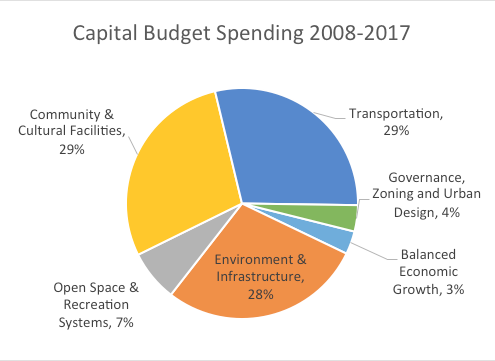Impact & Investment
The City of Norwalk’s planning efforts have one overall goal, to positively impact its residents, businesses and visitors. Development provides economic stimulus via new businesses and jobs, new housing and amenities for residents, as well as tax revenue for city improvements. One way of gauging the effectiveness of our planning is by tracking the city’s capital spending. The city has mandated that capital spending must be consistent with the Citywide Plan and requires that city departments prove that their capital requests are consistent with the plan.
Norwalk’s Grand List
The Grand List is a listing of all taxable property located within the City as of the prior October 1. As part of city planning, Norwalk tracks capital spending to long-term planning, so understanding how and where the city’s property values are versus investment is an important tool. Looking at the most recent Grand List, below are some key takeaways.
Grand List Analysis by Zone
- ~ 53% of the grand list is land that is zoned for single-family dwellings, which equals ~77% of the land area
- Multi-family, commercial, and industrial uses comprise ~41% of the grand list, while occupying 19% of the land area
- Industrial-zoned property is 4.7% of the grand list and 5% of the land area
- The urban core comprises 7.7% of the grand list but only 1% of the land area
Census Tract – Land Use Analysis
- Rowayton & Harbor View (Tract 446) comprise 11.3% of the grand list on 6% of the land area
- West Norwalk (Tract 431) comprises 8.4% of the grand list on 12% of the land area
- North Norwalk including Merritt 7 (Tract 427) comprises 9.7% of the grand list and 6% of the land area
- Washington St. & South Norwalk (Tract 441 ) comprises 6.7% of the grand list and 2% of the land area
Map of Grand List by Census Tract »
Census Tract Land Use Analysis »
Norwalk’s Capital Budget
Norwalk completed its 10-year Plan of Conservation and Development (Citywide Plan) in 2019. As part of the process, to measure the City’s impact through capital investment as a result of the 2008 plan, an analysis was undertaken of capital budget spending between July 1, 2008 – June 30, 2017.
In the nine year period, nearly $283 million was deployed towards the six major goals of that plan – Transportation, Governance, Economic Growth, Environment & Infrastructure, Open Space & Recreation and Community & Cultural Facilities. Some of these expenditures included critical pavement management, sanitary, technology and public safety improvements were made across the city, including road, sidewalk and curb improvements, construction of a new fire headquarters on Connecticut Avenue, Board of Education computer purchases for students, and replacement of the Perry Avenue Bridge.
These capital improvements helped guide the way for Norwalk’s social and economic growth, risk mitigation and increased resiliency.





